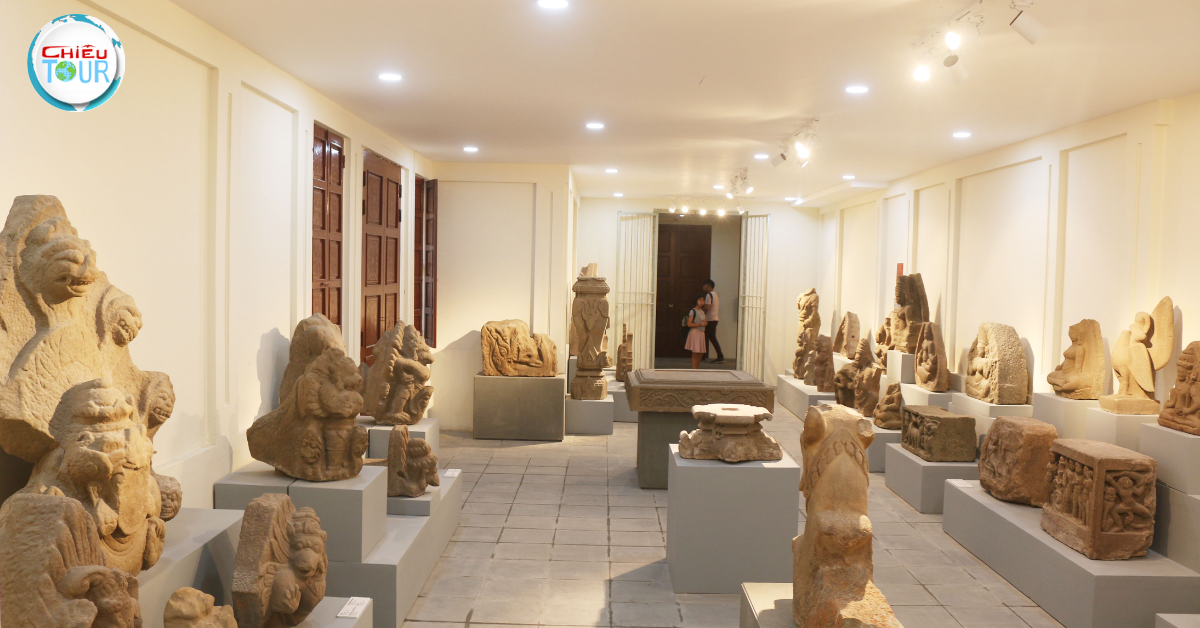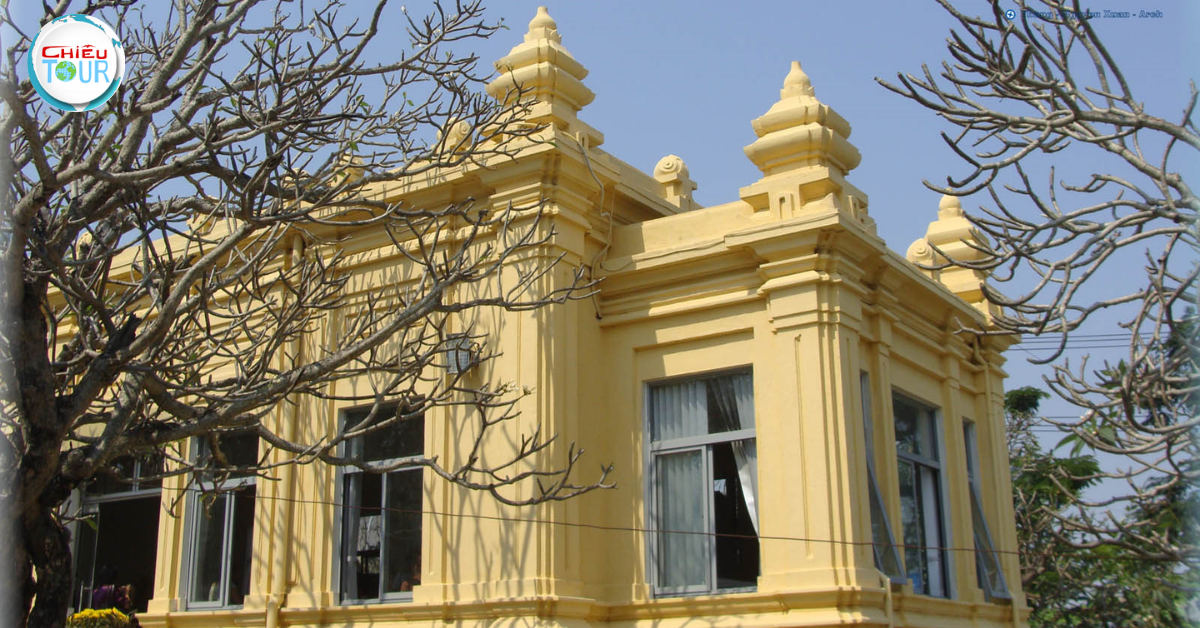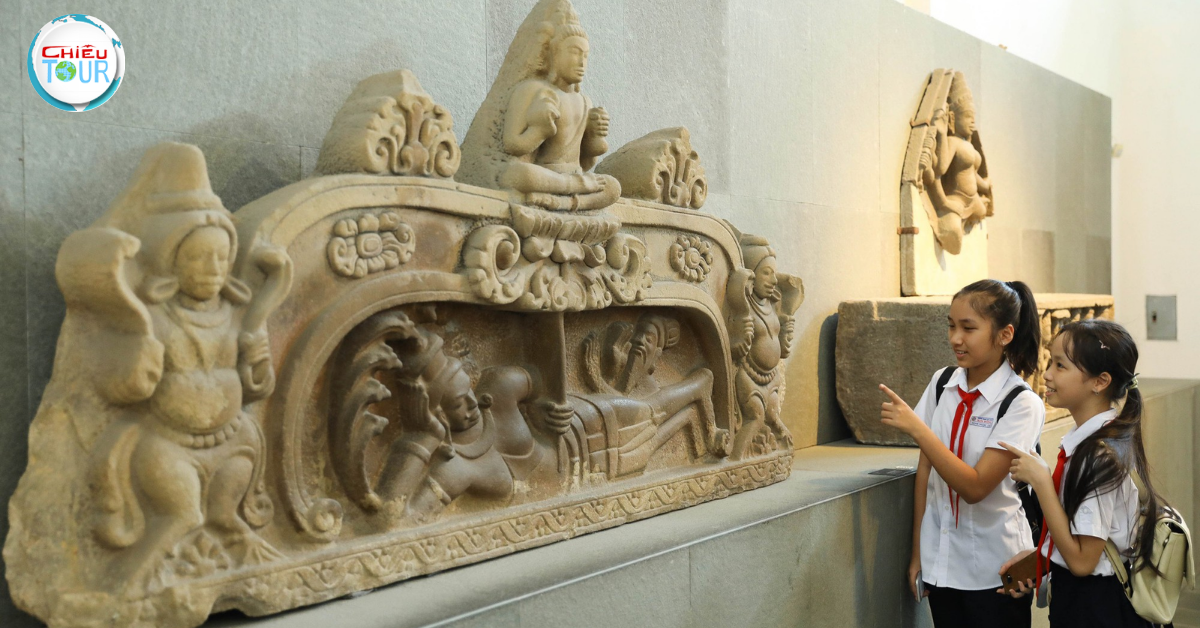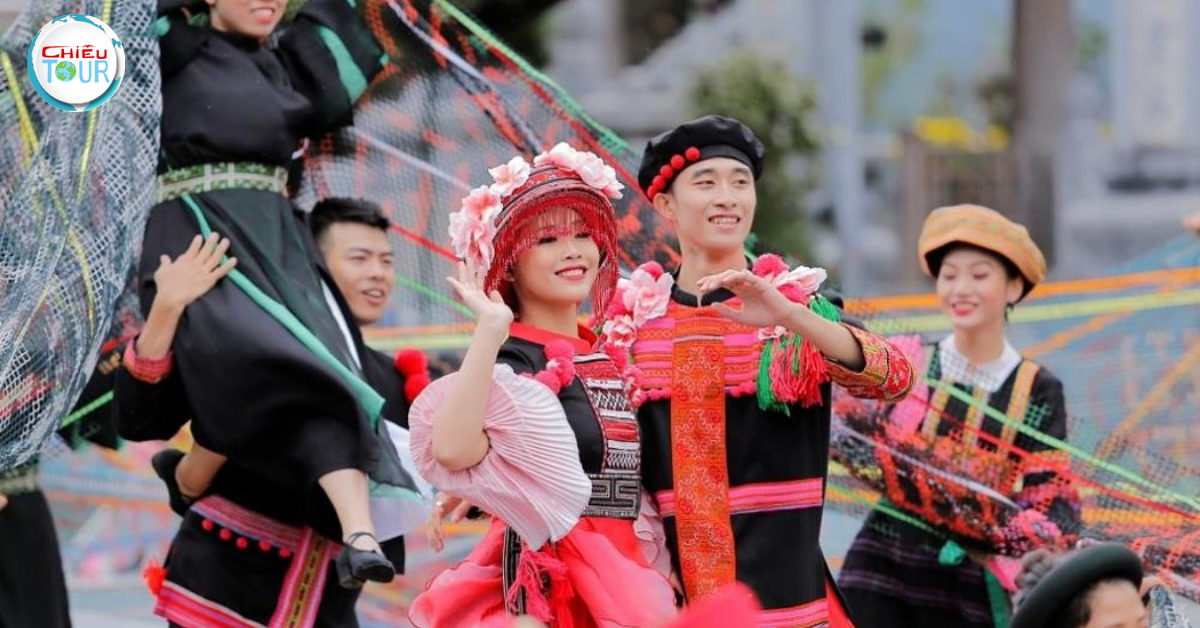The Cham Sculpture Museum: A Treasure of Ancient Art
- Author: Admin
- | Hot destination
The Cham Sculpture Museum: A Treasure of Ancient Art is an extraordinary repository that encapsulates the rich heritage and artistry of the Cham civilization, which flourished in Vietnam from the 4th to the 13th centuries. Nestled in Da Nang, this museum showcases an impressive collection of sandstone sculptures, intricate carvings, and remarkable artifacts that tell a story of a once-thriving culture deeply influenced by Hinduism and Buddhism. As you walk through the chambers of this magnificent establishment, you're not just witnessing artwork but traversing through time to understand the spiritual and cultural dimensions of the Cham people.
The Historical Context of Cham Sculpture
To truly appreciate the Cham Sculpture Museum: A Treasure of Ancient Art, one must delve into the historical context surrounding the Cham civilization. This civilization thrived along the central coast of modern-day Vietnam and was heavily influenced by Indian culture.
The Cham Empire The Cham Empire was established as early as the 2nd century AD and reached its zenith between the 7th and 10th centuries. This period witnessed extensive trade, cultural exchange, and artistic flourish, resulting in a unique blend of local and foreign influences. The Cham were predominantly Hindu, worshiping deities like Shiva and Vishnu, which deeply influenced their art and architecture.
Cultural Influences The Cham sculptors were adept at integrating local traditions with those borrowed from Indian aesthetics. As they created sculptures representing deities, mythical creatures, and everyday life, they infused their work with local motifs and narratives. Through this artistic fusion, the Cham civilization's creativity found a distinct voice that still resonates today.
The Decline of the Cham Civilization By the late 13th century, the Cham Empire began to decline due to various factors, including internal strife and external pressures from expanding empires, notably the Khmer and later, the Vietnamese. However, the artistry of the Cham people endured, preserved primarily through their stunning sculptures, many of which are housed in the Cham Sculpture Museum today.

Artistic Techniques of Cham Sculptors
Exploring the artistic techniques employed by Cham sculptors provides deeper insight into their craftsmanship. Their methods and materials played a crucial role in defining their work’s uniqueness.
Stone Carving Mastery The Cham sculptors primarily used sandstone, chosen for its availability and ease of carving. Each piece reveals meticulous attention to detail, from intricate facial expressions to elaborate drapery. The finish of the sculptures ranges from polished surfaces to rough textures, showcasing both the skill level and stylistic choices of the artisans.
Symbolism in Art Each sculpture often carries layers of symbolism. For example, the representations of deities typically have specific attributes that denote their divine powers. Understanding these symbols allows visitors to connect more profoundly with the artworks, recognizing the stories and beliefs that shaped the Cham worldview.
Use of Motifs and Themes Common themes in Cham sculptures include religious iconography, nature, and daily life. Many pieces depict scenes from Hindu epics such as the Ramayana, intermingling human experiences with divine narratives. By examining these motifs, one can gain insight into the societal values and spiritual beliefs of the Cham civilization.
The Collection at Cham Sculpture Museum
The Cham Sculpture Museum houses a vast and diverse collection of Cham artifacts, each echoing tales from the past. From massive stone reliefs to delicate figurines, the range of artworks presents a comprehensive picture of the Cham artistic legacy.
Noteworthy Sculptures Among the most revered pieces in the museum are the large statues of Hindu deities, including the iconic statue of Shiva, often depicted in dynamic poses that signify motion and grace. These sculptures exemplify the artistic prowess of Cham craftsmen and reflect the religious fervor that permeated their society.
Reliefs and Inscriptions The museum also boasts detailed stone reliefs narrating stories and historical events. These reliefs serve as visual storytellers, offering glimpses into the lives, beliefs, and environments of the Cham people. Additionally, some inscriptions provide insights into the political and social structures of the time, granting scholars valuable information for understanding the historical context.
Artifacts Beyond Sculpture While the prominence of sculptures is undeniable, the museum's collection extends to other artifacts like pottery, jewelry, and tools, which further enrich the understanding of the Cham civilization. Each item complements the sculptures, contributing to a holistic view of Cham life, their trade practices, and daily activities.

Importance of Preservation Efforts
The preservation of these ancient artworks is paramount for future generations. The Cham Sculpture Museum plays a vital role in safeguarding the Cham cultural heritage against the ravages of time and environmental factors.
Conservation Techniques Modern conservation techniques are employed to protect the artworks from deterioration. This includes climate control measures, careful restoration processes, and regular maintenance of the pieces on display. Professionals dedicate their expertise to ensure that the beauty of Cham art continues to inspire curiosity and admiration.
Educational Programs The museum also invests in educational programs aimed at raising awareness about the significance of preserving cultural heritage. Workshops, guided tours, and seminars encourage the community and visitors to engage with the history and artistry of the Cham civilization, fostering appreciation and stewardship.
International Collaborations Collaborations with international institutions enhance the museum's conservation efforts and broaden its reach. By participating in global discussions on heritage preservation, the Cham Sculpture Museum positions itself as a leader in the field, advocating for the importance of maintaining ancient cultures worldwide.
Visiting the Cham Sculpture Museum
A visit to the Cham Sculpture Museum is a journey worth undertaking for anyone interested in ancient civilizations, art, or culture. From its breathtaking collections to its educational initiatives, the museum offers a uniquely immersive experience.
Preparation for Your Visit Before visiting, it's advisable to research the museum's layout and special exhibits. Make sure to plan your visit during off-peak hours to enjoy a more intimate experience with the sculptures. Camera enthusiasts should check the museum's policy on photography, as capturing the intricate details can be rewarding.
Guided Tours The museum offers guided tours, led by knowledgeable staff who share insights and anecdotes about the Cham sculptures. Engaging with a guide can significantly enrich your understanding and appreciation, providing context that enhances the viewing experience.
Visitor Experience Once inside the museum, visitors are greeted by an atmosphere steeped in history. The arrangement of the sculptures encourages thoughtful reflection and exploration. Interactive displays and informational panels complement the artworks, making the visit informative and engaging. Whether you're an art aficionado or a curious traveler, the museum caters to all interests.

Tips for an Enriching Experience
To make the most of your visit, consider taking notes or sketching some of your favorite pieces. This will help you retain the knowledge gained during your exploration. Additionally, take the time to sit and absorb the ambiance of the museum, allowing yourself to ponder the significance of the artworks and the stories they convey.
What are the opening hours of the Cham Sculpture Museum?
The Cham Sculpture Museum is typically open from 8 AM to 5 PM daily, with extended hours during peak tourist seasons. It is advisable to check their official website for the latest updates.
Is there an entrance fee for the museum?
Yes, there is a small entrance fee for adults, while children and students often receive discounted rates. The fees contribute to the museum's maintenance and preservation efforts.
Are there any guided tours available?
Yes, guided tours are available and highly recommended. Knowledgeable guides provide valuable context and insights into the collections, enhancing the visitor experience.
Can I take photographs inside the museum?
Photography rules may vary; however, generally, non-flash photography is permitted in certain areas. It's best to inquire upon arrival to ensure compliance with the museum's policies.
Are there facilities for visitors at the museum?
Yes, the Cham Sculpture Museum offers essential visitor amenities, including restrooms, a café, and gift shops where you can purchase souvenirs related to Cham culture.
Conclusion

In conclusion, the Cham Sculpture Museum: A Treasure of Ancient Art serves as a beacon of the creativity and spirituality of the Cham civilization. Through its extensive collection of sculptures, artifacts, and dedicated preservation efforts, it honors a vibrant culture that has left an indelible mark on history. A visit to this museum not only exposes one to the exquisite craftsmanship of ancient artisans but also invites contemplation about the enduring power of art to transcend time and speak to the shared human experience. Whether you are an art lover, a historian, or simply a curious traveler, the Cham Sculpture Museum promises an enlightening journey into the rich tapestry of human creativity and cultural heritage.
 Vietnam
Vietnam 





